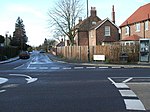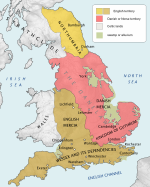Towthorpe, York

Towthorpe is a hamlet in Strensall with Towthorpe civil parish in the unitary authority of the City of York in North Yorkshire, England. It lies between Huntington and Strensall about 5 miles (8 km) north of York. According to the 2001 census, the parish had a population of 1,967. The data for the 2011 census is included in the civil parish of Strensall with Towthorpe, which had a population of 6,047.The hamlet was historically part of the North Riding of Yorkshire until 1974. It was then a part of the district of Ryedale in North Yorkshire from 1974 until 1996. Since 1996 it has been part of the City of York unitary authority. Towthorpe was formerly a township in the parish of Huntingdon, in 1866 Towthorpe became a separate civil parish, on 1 April 2009 the parish was abolished and merged with Strensall to form "Strensall with Towthorpe".Part of the Strensall training area and adjacent Queen Elizabeth Barracks are located to the north east of the hamlet. The training area was formerly Strensall and Towthorpe Common.
Excerpt from the Wikipedia article Towthorpe, York (License: CC BY-SA 3.0, Authors, Images).Towthorpe, York
Towthorpe Moor Lane, York Strensall with Towthorpe
Geographical coordinates (GPS) Address Nearby Places Show on map
Geographical coordinates (GPS)
| Latitude | Longitude |
|---|---|
| N 54.01861 ° | E -1.03234 ° |
Address
Army Medical Services Training Centre (Towthorpe Lines)
Towthorpe Moor Lane
YO32 9SS York, Strensall with Towthorpe
England, United Kingdom
Open on Google Maps











